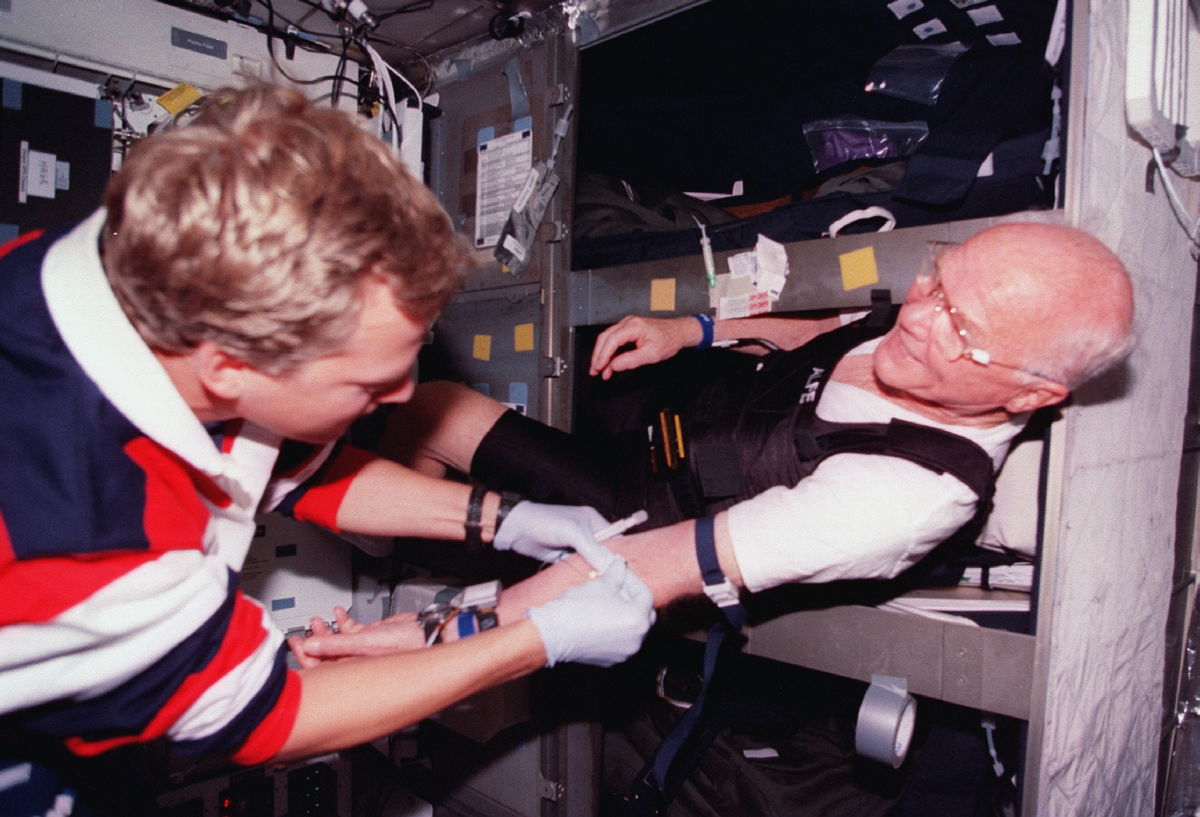Space Station to Get New Insomnia-Fighting Light Bulbs

NASA plans a new weapon in the fight against space insomnia: high-tech light-emitting diodes to replace the fluorescent bulbs in the U.S. section of the International Space Station.
About half of everyone who flies to space relies on sleep medication, at some point, to get some rest. For $11.2 million, NASA hopes to use the science of light to reduce astronauts' dependency on drugs.
According to NASA flight surgeon Smith Johnston, studies in Anchorage, Alaska showed that hospital staff made more medical errors during the darkest times of the year. The finding demonstrates that people have a day-night cycle that must be respected, even when they're doing the demanding work of space exploration.
"When you have normal light coming through the windows of stores, and schools, and hospitals, people do better. They function better," said Johnston, the lead physician for NASA's wellness program. [Video: Do Astronauts Dream of Weightless Sheep?]
Tough sleep in space
Sleep is no trivial matter in space. Astronauts generally get about six hours of shut-eye in orbit despite being allowed 8.5. Demanding schedules and unusual environments are among the factors that cause insomnia.
"The station is noisy, carbon dioxide is high, you don't have a shower, there's a lot of angst because you've got to perform. Imagine if you have a camera on you 24 hours a day," Johnston said.
Get the Space.com Newsletter
Breaking space news, the latest updates on rocket launches, skywatching events and more!
Over time, sleep deprivation can cause irritation, depression, sickness or mistakes. Any of these problems can be dangerous in the close, confined, pressurized quarters of the space station.
In an effort to address the problem, NASA plans to replace the orbiting laboratory's fluorescent bulbs with an array of LEDs switching between blueish, whitish and reddish light, according to the time of day. The changes can be programmed in by the ground, or the astronauts. The new light bulbs are due to be swapped in by 2016.
Blue light stimulates the human brain best because people evolved to respond to the color of Earth's sky, experts say. When an astronaut's eyes are exposed to blue light, his or her body suppresses melatonin, a sleep-inducing hormone. Blue also promotes the formation of melanopsin, a "protein pigment" that keeps people awake.
In simple terms, the color red reverses the process. Melatonin increases, making the astronaut sleepy, while melanopsin is suppressed.
"You can dial in a natural day-night cycle on the space station" with the new light arrays, which are being developed by Boeing, Johnston said.
It should work well, he added, unless astronauts look out the window at bedtime. They then run the risk of confusing their body clocks by exposing their eyes to natural sunlight reflecting off of Earth.
Sleep training
Technology can go only so far in solving sleep problems, Johnston said. This is why NASA prescribes good "sleep hygiene" for its crews before and during spaceflight.
Medications are used only as a last resort, and are tested extensively on Earth by each crew member. In case of emergency, astronauts must awaken easily even during the deepest stages of sleep.
The astronauts also get practice sleeping under difficult circumstances by virtue of their demanding preflight schedules, which include flights to Russia and Japan for training.
NASA works with the astronauts to minimize jet lag. Techniques that help for each crew member, such as wearing sunglasses on the plane and taking medications at a certain time, can then be used in orbit.
Groups on Earth will benefit from the research, too, especially shift workers or travellers fighting jet lag, Johnston said.
"Hopefully, we'll have spinoffs that other doctors can use, and the military can use for their flight surgeons."
Follow Elizabeth Howell @howellspace, or SPACE.com @Spacedotcom. We're also on Facebook and Google+.
Join our Space Forums to keep talking space on the latest missions, night sky and more! And if you have a news tip, correction or comment, let us know at: community@space.com.

Elizabeth Howell (she/her), Ph.D., is a staff writer in the spaceflight channel since 2022 specializing in Canadian space news. She was contributing writer for Space.com for 10 years before joining full-time. Elizabeth's reporting includes multiple exclusives with the White House, speaking several times with the International Space Station, witnessing five human spaceflight launches on two continents, flying parabolic, working inside a spacesuit, and participating in a simulated Mars mission. Her latest book, "Why Am I Taller?" (ECW Press, 2022) is co-written with astronaut Dave Williams.